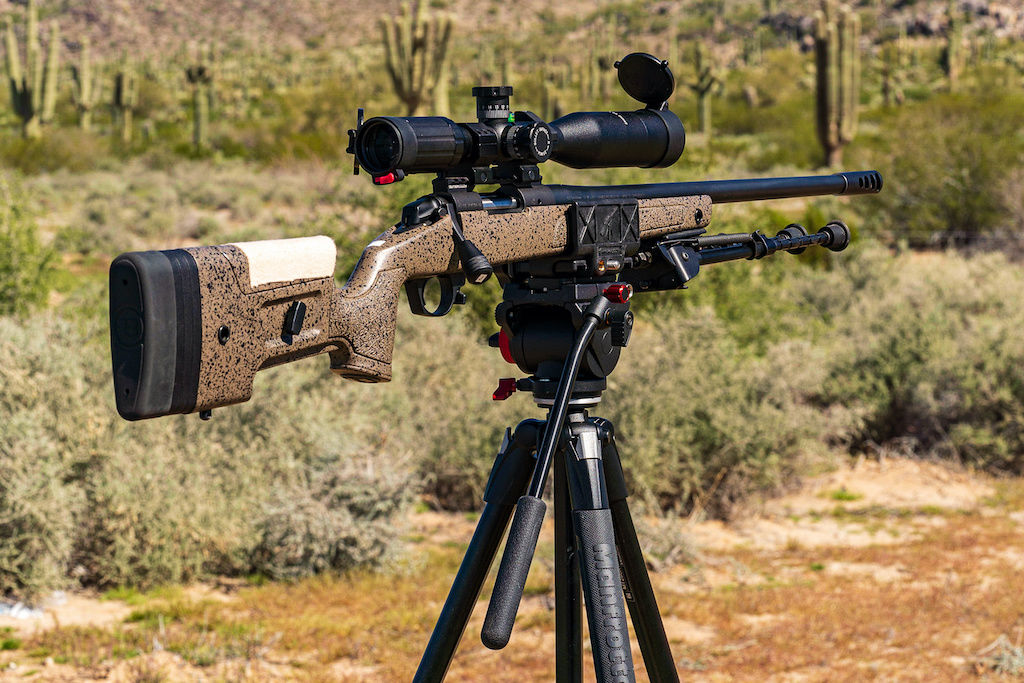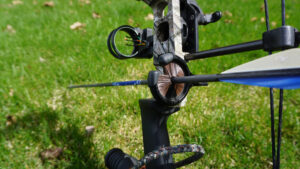If you’re planning a halibut fishing trip to Alaska, it’s important to understand the best time to go. Alaska’s vast coastline offers a unique opportunity to catch these massive flatfish, but their abundance and behavior are influenced by various factors. By considering the halibut season, the impact of weather, the role of tides, and the best months for fishing, you can optimize your chances of a successful and enjoyable fishing experience.
Understanding Halibut Season in Alaska
The halibut season in Alaska is primarily dictated by the life cycle and migration patterns of these fish. Understanding these patterns can help you determine the best time to plan your fishing trip.
Alaska, known for its pristine waters and abundant marine life, is a haven for fishing enthusiasts. Among the many species that attract anglers from around the world, halibut holds a special place. These flatfish, known for their delicious meat and impressive size, have a fascinating life cycle that influences the timing of the fishing season.
The Life Cycle of Halibut
Halibut have a complex life cycle that involves spawning, growing, and migrating. After hatching in offshore waters, juvenile halibut typically migrate towards shallower coastal areas. These young fish seek shelter and food in the nutrient-rich kelp forests and rocky reefs that line the Alaskan coast.
As the halibut grow, they undergo a remarkable transformation. Their bodies become more elongated, and their eyes migrate to one side of their head, allowing them to lie flat on the ocean floor. This adaptation is crucial for their survival, as it enables them to ambush their prey, which includes a variety of fish, squid, and crustaceans.
As they continue to mature, halibut gradually move to deeper waters, where they find an abundance of food and suitable spawning grounds. These spawning grounds, often located in offshore areas, provide the ideal conditions for halibut to reproduce and ensure the survival of their species.
Factors Influencing Halibut Season
Several factors influence the halibut fishing season in Alaska. These include water temperature, food availability, and the presence of prey species. Halibut are cold-water fish, preferring temperatures between 37 and 50 degrees Fahrenheit. Therefore, the season typically starts in late spring when the water begins to warm up, and extends into early fall.
Food availability is another crucial factor that affects the halibut season. These voracious predators require a steady supply of food to sustain their growth and energy needs. The abundance of prey species, such as herring, salmon, and cod, plays a significant role in determining the timing and duration of the fishing season.
Furthermore, fishing regulations and limits are put in place to ensure the sustainability of the halibut population. Alaska’s Department of Fish and Game closely monitors the halibut fishery, implementing measures to prevent overfishing and protect the long-term health of the species. These regulations may include size restrictions, bag limits, and seasonal closures in certain areas.
Understanding the factors that influence the halibut season in Alaska can greatly enhance your fishing experience. By planning your trip during the peak season when the water temperature is ideal and the halibut are actively feeding, you increase your chances of landing a prized catch. So, whether you’re a seasoned angler or a novice fisherman, exploring the halibut season in Alaska is an adventure you won’t want to miss.
The Impact of Weather on Halibut Fishing
Weather conditions play a crucial role in determining the success of your halibut fishing trip. Understanding the ideal weather conditions and the weather patterns in Alaska can help you plan accordingly.
When it comes to halibut fishing, the weather can make or break your experience. It’s not just about the gear you bring or the bait you use; the weather can directly affect the behavior and feeding patterns of halibut. So, let’s dive deeper into the ideal weather conditions for halibut fishing.
Ideal Weather Conditions for Halibut Fishing
Halibut are more active and likely to bite during certain weather conditions. Overcast skies, moderate winds, and a stable barometric pressure are favorable for halibut fishing. But why is that?
Well, overcast skies provide a shield from the sun’s bright rays, creating a more comfortable environment for halibut. They tend to stay closer to the surface and are more active during these conditions. Moderate winds help create a gentle current, which in turn, stirs up the water and brings food sources closer to the surface, enticing halibut to feed. Additionally, a stable barometric pressure indicates a relatively stable weather system, which means halibut are less likely to be affected by sudden changes and are more likely to be in a feeding mood.
Imagine yourself on a halibut fishing trip with the perfect weather conditions. The overcast skies create a serene atmosphere, and the gentle breeze keeps you cool. As you drop your line into the water, you can feel the excitement building up, knowing that the halibut are more likely to be actively feeding.
Weather Patterns in Alaska
Alaska experiences diverse weather patterns throughout the year. Coastal areas can be prone to sudden weather changes and strong winds, which can significantly impact your fishing plans. It is important to monitor the weather forecast and plan your fishing trip accordingly.
When it comes to fishing in Alaska, being prepared for changing weather conditions is essential. The weather can shift from calm and sunny to stormy and windy within a matter of hours. This is especially true in coastal areas, where the influence of the ocean and the proximity to mountains can create unpredictable weather patterns.
So, how can you stay ahead of the weather in Alaska? Monitoring the weather forecast is a good start. Pay attention to any warnings or advisories issued by the National Weather Service. Keep an eye out for signs of approaching storms, such as darkening skies, increasing wind speed, and a drop in barometric pressure.
Understanding the impact of weather systems, such as low-pressure systems and frontal boundaries, can also help you predict and adapt to changing weather conditions. Low-pressure systems often bring rain, strong winds, and rough seas, making it less than ideal for halibut fishing. On the other hand, frontal boundaries can create a mix of weather conditions, with periods of rain, wind, and calm in between. By familiarizing yourself with these weather patterns, you can make informed decisions about when to go fishing and when to stay ashore.
So, whether you’re planning a halibut fishing trip in Alaska or any other location, remember that the weather plays a significant role in your success. By understanding the ideal weather conditions and being prepared for changing weather patterns, you can increase your chances of having a memorable and fruitful fishing experience.
The Role of Tides in Halibut Fishing
Tidal movements significantly affect halibut behavior and feeding patterns. Understanding the tides and timing your fishing trip accordingly can increase your chances of a successful catch.
Understanding Tidal Movements
Tidal movements are caused by the gravitational pull of the moon and the sun. These gravitational forces create a bulge of water on the side of the Earth closest to the moon and on the opposite side of the Earth. As the Earth rotates, different areas experience high and low tides.
For halibut fishing, it is important to understand the relationship between tidal movements and the behavior of these fish. Halibut tend to be more active during certain tidal phases. When the tide is rising, also known as the incoming tide or flood tide, halibut are more likely to move closer to the shore and actively feed. On the other hand, during the falling tide, also known as the outgoing tide or ebb tide, halibut may retreat to deeper waters.
Learning to read tide charts is essential for effective halibut fishing. Tide charts provide information on the times and heights of high and low tides, allowing anglers to plan their fishing trips accordingly. By understanding the tidal movements and their impact on halibut behavior, you can strategically choose the best time to fish for these prized fish.
Timing Your Fishing Trip with the Tides
To maximize your chances of a successful catch, it is crucial to plan your fishing trip around the tidal phases that are most favorable for halibut feeding. The incoming tide and the outgoing tide are typically the most productive periods for halibut fishing.
During the incoming tide, the rising water brings in a fresh supply of food and nutrients, attracting halibut closer to the shore. This is when they are actively searching for prey and are more likely to take the bait. As the tide reaches its peak, the water becomes calmer, providing an ideal opportunity to target halibut in shallower waters.
On the other hand, during the outgoing tide, halibut may move away from the shore and retreat to deeper waters. However, they can still be caught during this phase, especially near underwater structures such as reefs, drop-offs, or underwater ledges. These structures create areas of turbulence and eddies, which can concentrate baitfish and attract halibut looking for an easy meal.
By aligning your fishing trip with the incoming and outgoing tides, you increase your chances of encountering actively feeding halibut. It is important to note that the exact timing and duration of these tidal phases may vary depending on your location, so consulting local tide charts is essential for accurate planning.
Remember, successful halibut fishing requires not only understanding the tides but also considering other factors such as weather conditions, water temperature, and the availability of baitfish. By combining these elements with your knowledge of tidal movements, you can create a comprehensive fishing strategy that greatly enhances your chances of a memorable halibut catch.
Best Months for Halibut Fishing in Alaska
The best months for halibut fishing in Alaska can vary based on the specific region and the preferences of individual anglers. Understanding the seasonal variations and the month-by-month breakdown can help you plan your trip accordingly.
Seasonal Variations in Halibut Fishing
Halibut fishing in Alaska experiences seasonal variations due to factors such as water temperature, migration patterns, and spawning activity. Early summer and early fall are generally considered to be the prime seasons for halibut fishing. However, other months can also offer excellent fishing opportunities depending on the location.
Month-by-Month Breakdown
To give you a better idea of the best months for halibut fishing in Alaska, here is a breakdown:
- May: The season begins, and halibut are actively feeding after the winter months.
- June: Halibut activity increases, and larger fish start moving closer to the coast.
- July: Peak season for halibut fishing, with larger fish abundant and feeding aggressively.
- August: Fishing remains excellent, with good opportunities for anglers of all levels.
- September: Halibut size and numbers begin to taper off as the season comes to a close.
Essential Gear for Halibut Fishing
Having the right gear is crucial for a successful halibut fishing trip. Here are two key items to consider:
Choosing the Right Fishing Rod
A sturdy fishing rod capable of handling the weight and power of halibut is essential. Look for a rod specifically designed for saltwater fishing and that can handle heavy line weights. A rod with a combination of strength and flexibility will ensure you can effectively land the halibut without compromising on the fight.
Selecting the Best Bait for Halibut
Choosing the right bait is also important for attracting halibut. Commonly used baits for halibut fishing include herring, salmon heads, and squid. Experimenting with different baits and presentation techniques can help you determine what works best for the conditions and the preferences of the fish.
By understanding the halibut season, the impact of weather, the role of tides, the best months for fishing, and the essential gear, you can optimize your time and increase your chances of a successful halibut fishing adventure in Alaska. So, plan your trip accordingly, remember to check the fishing regulations, and get ready to reel in the catch of a lifetime!


